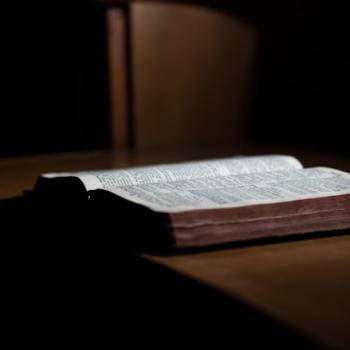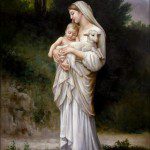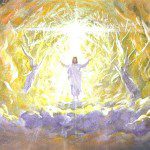Further, Padmasambhava and several later Tibetan masters have used their superior extraphysical powers to overwhelm and "tame" harmful spirits, such as Nechung. Forcing the spirits to accept Buddhism, they have made them vow to protect the Dharma. In effect, they have converted and rehabilitated the spirits to become Dharma protectors.
Evidence from Kalachakra
Although it would be difficult, based on Buddhist scripture, to justify gross, obvious forms of forced conversion such as these; are there textual references regarding subtler forms of conversion in Buddhism? The Kalachakra literature provides a revealing source for investigation. It emerged in Kashmir and northern India in the late tenth and early eleventh centuries CE, when invading Muslim armies were conquering lands to the west with primarily Buddhist and Hindu populations. Its discussion of history undoubtedly drew also on the experiences of the region between eastern Afghanistan and Kashmir during the previous two centuries and described interfaith relations among the three religions there.
According to the traditional account, King Suchandra of Shambhala received the Kalachakra tantra teachings from Buddha himself in South India and brought them back to his northern land. Seven generations later, his successor Manjushri Yashas gathered the brahman wise men of Shambhala in the three-dimensional Kalachakra mandala palace his ancestors had built in the royal park. He wished to warn the brahmans about a future non-Indic religion that would arise in the land of Mecca. Many scholars identify this religion with Islam, since the predicted year of its founding is only two years past the start of the Islamic calendar. For ease of discussion, let us provisionally accept their conclusion, although one needs to qualify this identification in terms of the forms of messianic Islam the formulators of the Kalachakra teachings most likely encountered. They would have been the form of eastern Ismaili Shia prevalent in Multan (northern Sindh, Pakistan) during the late tenth century CE, with perhaps an admixture of the so-called Manichaean Shia "heresy."
Manjushri Yashas described that the followers of the non-Indic religion will slit the throats of cattle, while reciting the name of their God Bismillah (Arabic for "in the name of Allah"), and then eat the meat. He told the brahmans to examine how people around them were observing their Vedic religion. They needed to correct misunderstandings and corrupt practices, particularly the sacrifice of bulls to their gods and the subsequent eating of their flesh. Otherwise, their descendants would see no difference between the religion of their ancestors and that of the foreigners, and would embrace the latter, facilitating foreign takeover of their land. Moreover, the brahmans needed to end their custom of refusing to intermarry or even to eat or drink with members of other castes. If religious beliefs cause internal divisions and people cannot cooperate in the face of danger, society cannot survive an external threat.
Based on the logic of his arguments, Manjushri Yashas invited the brahmans to join with the rest of the people of Shambhala in the Kalachakra mandala, receive empowerment, and form one "vajra-caste." At first, the brahmans refused and fled toward India. The King saw that if their spiritual leaders departed, the people of Shambhala would take it as a sign that forming one caste was wrong, and so they would continue their self-destructive customs. Therefore, Manjushri Yashas used his psychic powers to draw the brahmans back to the mandala. Examining more deeply the wisdom of the King and seeing its truth, the brahman leaders now accepted his advice and so Manjushri Yashas conferred upon the population the Kalachakra empowerment. In uniting the people into a single vajra-caste, the King became the First Kalki of Shambhala - the First "Holder of the Caste."
The Issue of Conversion
Was this first mass empowerment an example of forced conversion of the brahmans or of the entire population of Shambhala to Buddhism? Are the mass Kalachakra empowerments that have followed, and which continue to today, also examples of covert conversions? Were the First Kalki's actions consistent with scriptural authority and historical precedent? Let us critically analyze the textual account of the event, trying to avoid the extremes of either whitewashing the evidence to make Buddhism look innocent and nice, or inflating it to make Buddhism look evangelistic and bigoted.
Conversion by Logic
Buddha taught people not to accept his teachings merely out of faith or respect for him, but to examine them critically as when buying gold. Thus, at the great Indian monastic institutions of the first millennium C.E., Buddhist monks supporting various philosophical tenet systems debated with each other and with scholars from non-Buddhist centers of learning. The losers were required to accept the tenets of the victors and thus, in effect, to "convert" to the more logically consistent systems. After all, they had "examined the teachings critically as when buying gold."




